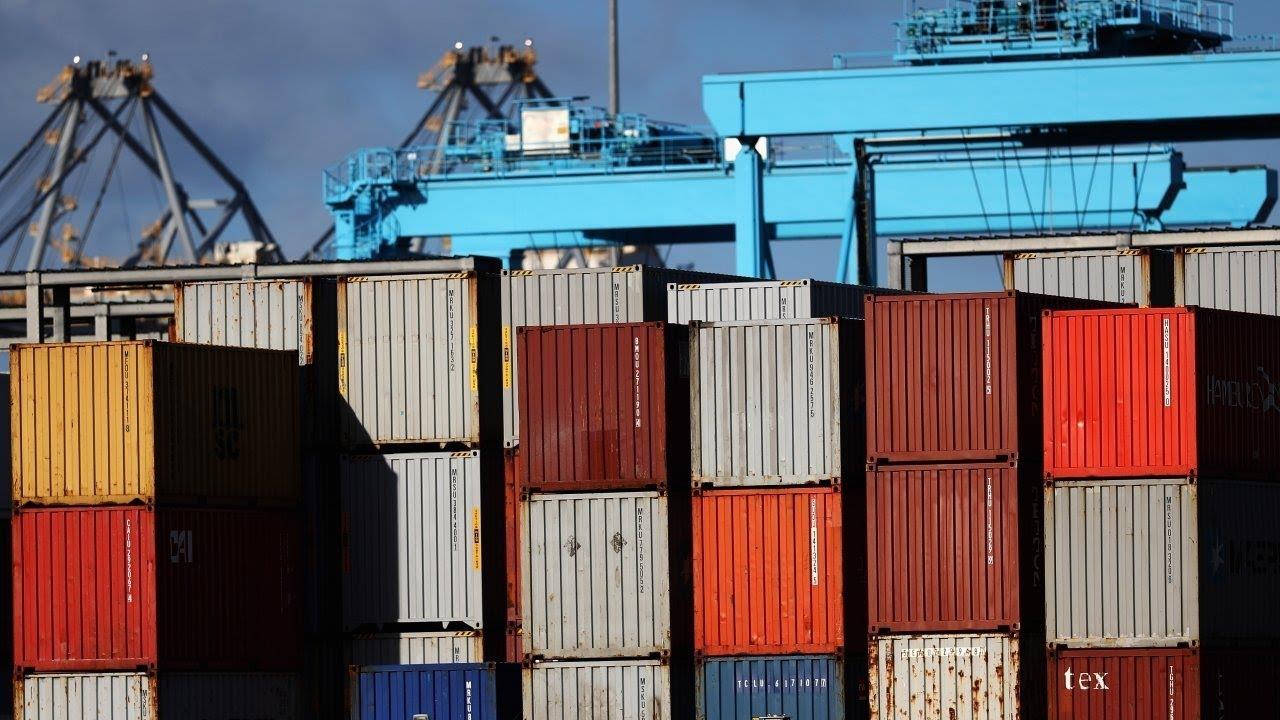
( MENAFN - Asia Times) In the October 18 summary of the Wall Street Journal's“Weekend Interview between the Journals' editors and Donald trump ,” James Taranto notes disagreement about tariffs – the Journal editors being against them, as have been several recent op-eds including one by Phil Gramm and Donald Boudreaux published October 16. Economics textbook models, assuming no military threats, no taxation, no volatile exchange rates and no restrictions on the movement of people across borders, show that whereas the introduction of tariffs improves the situation of a protected sector, the damage to the rest of society is greater than the benefit. However, once we discard the assumptions, the case against tariffs disappears.
The Gramm and Boudreaux employment of 19th century data about the peaceful US to make the case against tariffs is irrelevant now since that century (a.) was on the gold standard and (b.) was characterized by especially free movement of people, millions coming to the“swim or sink” US's model of society at the time.
These are not new observations. Adam Smith wrote similarly in his Wealth of Nations: Governments must impose tariffs“when some particular sort of industry is necessary for the defense of the country.” He thus justified the Navigation Act, which, among other restrictions, allowed only English ships to bring goods into England.
Another case “in which it will generally be advantageous to lay some burden upon foreign [countries] for the encouragement of domestic industry is when some tax is imposed at home upon the produce of the latter. In this case, it seems reasonable that an equal tax should be imposed on the like produce of the former.” Academic and nationalist jargons can distort these arguments and suggest that governments must then protect boot-makers, farmers and steel makers since the army needs boots, steel and food to march, fly and eat – patriotism used as a political tool to rationalize every tariffs.
However, this reservation is just a reminder of being skeptical of all generalizations. Still, in his influential Capitalism and Freedom published in 1962, Milton Friedman wrote that“it would be far better to move to free trade unilaterally, as Britain did in the 19th century when it repealed the Corn Laws in 1846.” He believed that, but presented no evidence.
What happened in Europe then was something different. During the first half of the 19th century, France's average tariffs stood at roughly 20%, whereas England's was in the 50-65% range – yet the Industrial Revolution was taking place in England. France's did not start until the second half of that century – and used British engineers to build the railways.
True, by 1850 English average tariffs dropped to the 25% range. However, Napoleon II's promotion led to the 1860 Treaty of Commerce between France and England, following which the average level of tariffs dropped in both countries to the 10% range, other countries joining the treaty. The coordinated drop came with other changes.
Whereas England was under the gold standard since the early 18th century, by 1870 and until 1914, Europe and much of the world came to be on the gold standard, a period accompanied by relatively free movement of people and capital – not replicated since. The1930s analyses of the impact of reducing the Smoot-Hawley tariffs are no better. They neglect the sequence of events preceding the reduction.
President Franklin Roosevelt confiscated gold in 1933, and promptly did a 59 percent devaluation of the dollar (in terms of gold). Subsequently, in 1934, FDR got the unprecedented right to renegotiate trade agreements (the Congress delegating authority to the executive branch with the reciprocal trade agreement). Devaluation has impacts similar to tariffs.
Both encourage domestic production (both at a cost – in an ideal world). The devaluation diminished the American need of tariffs, and gave greater negotiating powers with European countries that did not devalue relative to gold (Britain and France). None of these conditions exists these days, particularly the“sink or swim” feature.
Floating exchange rates and heavy regulations on the movement of people have severe consequences. Tariffs – second bests – mitigate compounding mistaken exchange rate and other policies and atavistic models in the world. Consider the impact of floating exchange rates.
We negotiate prices of goods, services, longer-term contracts, financial ones in particular to ensure their purchasing power in global trade. The 19th century gold standard assured such stability. These days most contracts are priced in dollars or euros, which, however, fluctuate one relative to the other and relative to other currencies in the 50-100% or even more over short periods.
In the present floating exchange rates system, this volatility brought about the multi-trillion-dollar trade in notional derivatives, their main role being to approximate stable values of contract. Their use does not come cheap and requires deep financial domestic markets that most countries do not have. In the countries lacking markets, companies' access to financing becomes more expensive or even prohibitive, preventing them from growing – although these countries experience rapidly increasing young population.
In an“ideal world,” capital would flow from aging societies to younger ones – as the former are savers, and the latter are the future. However, at present, the aging societies have the institutions that secure values of capital flows. The younger, even well skilled cohorts in the developing countries, having limited access to capital, stay under-employed, under-paid and live under atavistic institutions, with limited options to migrate.
One consequence of immobilizing employees is have them produce goods and services at far lower prices than in Western welfare states, where employees pay taxes for sustaining their welfare model of society. This is exactly the situation that Adam Smith considered exceptional as justifying tariffs. Depending on the execution, and if combined with different migration policies, tariffs could not only protect the nation's employees, but also be so structured as to attract investments and properly channel the migration flow.
Are such tariffs the“ideal” way to deal with the present global upheaval? Are there better alternatives? In principle, yes. On the horizon – no. An alternative would be to go back to clauses in the original Bretton Woods agreement to stabilize exchange rates.
During the negotiations, John Maynard Keynes worried that fixed exchange rates there would lead to chronic balance of payments problems, some countries experiencing constantly rising dollar reserves. To sustain stable exchange rates, the latter countries had to“commit” to expand domestically and liberalize imports. To achieve such commitment, Keynes suggested penalizing these countries with prolonged trade surpluses, limiting purchases of their exports.
This clause was never enforced. In a recent WSJ op-ed, Greg Ip, though not mentioning exchange rates, paraphrases Michael Pettis offering a solution other than tariffs to achieve this: He writes that Pettis“believes that taxing surplus countries' purchases of US assets would stop the inflow of their savings [and would] aid US-based manufacturers' competitiveness and reduce the trade deficit.” Capital taxes“target surplus countries directly.
” The problem with this solution is that countries building up reserves pursue centralized models of society – while deepening financial markets by deploying savings domestically disperses power, which those in charge are reluctant to do. Briefly: Western welfare states face now such centralized states, wherein dwell the majority of the (immobilized) youth (in the now 8 billion population, up from 1 billion a century ago) – a massively dis-equilibrated world. As of now, all these states pursue a mistaken exchange rate policy, too.
Tariffs – on the movement of people, too – are a way to mitigate the impact of this range of mistaken policies, putting pressures on the atavistic states to change their domestic policies. This article draws on two books by Reuven Brenner, The Force of Finance: Triumph of the Capital Markets and History: The Human Gamble, and on his article“Toward a New Bretton Woods Agreement .” Thank you for registering! An account was already registered with this email.
Please check your inbox for an authentication link. MENAFN28102024000159011032ID1108826503 Legal Disclaimer: MENAFN provides the information “as is” without warranty of any kind. We do not accept any responsibility or liability for the accuracy, content, images, videos, licenses, completeness, legality, or reliability of the information contained in this article.
If you have any complaints or copyright issues related to this article, kindly contact the provider above..














